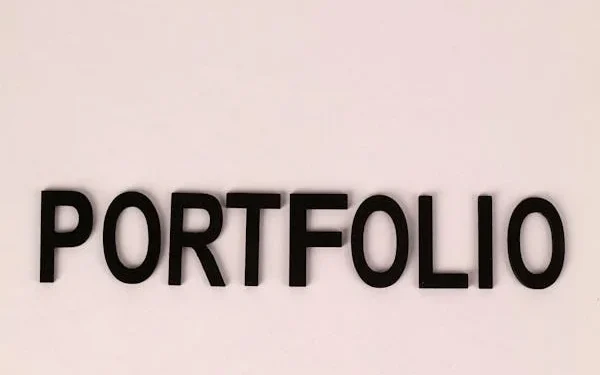You checked LinkedIn and saw a job advert requiring a blog post writer in the family care niche. “I can do this, you told yourself.” Excitedly, you sent the samples you have written for your past clients to the prospective client. But instead of “You are hired,” you get, “Sorry, I am not certain you wrote this content because the bylines do not show your name.”
Hope dashed, sadness enveloped your mind – maybe writing is not for me, you thought. No, writing is for you and I am here to hold you by hand and proffer solutions to this. By the time you read this content, you will smile, pray silently for me, and say “Thank God, I meet Na’im. Without wasting much time, how do you create a portfolio when you can’t showcase your ghostwritten content?
The Freelance Paradox
When it comes time to land another freelance client, you’re back at square one: no sample to show, no portfolio to present. It feels like a freelance paradox. You can’t tell your new prospect about your ghostwriting job because it’s ghostwritten, but you can’t secure the work without a portfolio to display your skills. And, can you even talk about your ghostwriting clients with other prospects?
So, what can you do? Without violating any rules or crossing NDA lines, you can still build a ghostwriting portfolio. Let’s dive into some effective strategies to create that ghostwriting portfolio and market your ghostwriting business.
Understanding the Role of a Ghostwriter
What exactly does a ghostwriter do? A ghostwriter creates various types of content, including articles, speeches, books, blog posts, email newsletters, web copy, social media posts, whitepapers, case studies, and landing pages. However, the credit goes to your client or someone in their company, not you. This means you can’t publicly share your work unless your ghostwriting client gives you the green light.
So, why would someone want to be a ghostwriter in the first place? Because it’s highly profitable. Established ghostwriters with a portfolio can earn more than $50,000 per year, meaning you can substantially earn more income as a ghostwriter. Imagine earning that in the comfort of your home. Heaven on earth!
So how do you create an effective ghostwriting portfolio – the best 7 strategies?
If you’re a beginner and have no samples to show clients, the first step to ghostwriting is to create those samples.
1. Guest Post on Popular Websites
A tried-and-true method is to guest post on websites your ideal clients frequent. Many businesses, publications, and websites offer this opportunity and provide guidelines to help you understand your audience and brand voice. For example, if you specialize in SaaS content writing, focus on SaaS-related businesses like Zapier, which offers guest writing opportunities. If you write make-money-online-content, you can ghostwrite on my blog. Craft content on your niche topic or specialization and mention in your author bio that you are a writer and ghostwriter for CEOs or influencers.
To find guest posting opportunities, use Google to search for “write for us” along with your niche. Ensure the site’s audience consists of your ideal clients, covers topics you can contribute to, and doesn’t require payment to guest post.
2. Publish on Medium
If you’re looking to build your personal brand, Medium is an excellent platform. Medium allows you to write about any topic that interests you, making it a versatile tool for showcasing your writing skills. As a new ghostwriter without a portfolio, use Medium as a substitute for a personal blog. Write content that appeals to your target audience and mention your ghostwriting services.
If you want to contribute to Medium’s many publications, consider signing up for the Medium Partner Program. It’s affordable and grants you access to all the content on Medium.
3. Start a Personal Blog
Creating a personal blog is a fantastic way to demonstrate your writing abilities and build a portfolio. Write about topics that interest you and align with your niche. Over time, your blog can become a repository of your best work, showcasing your skills to potential clients. It also gives you a platform to share insights about ghostwriting and the industry.
4. Collaborate with Fellow Writers
Reach out to other writers or bloggers in your niche and propose collaborations. Co-author articles or contribute sections to larger pieces. This strategy helps you create more samples and exposes you to a broader audience, enhancing your credibility and reach.
5. Volunteer Your Writing Services
Offer your writing services to non-profits, local businesses, or community projects. This can be a great way to gain experience, build your portfolio, and give back to your community. Plus, these organizations are often more flexible and may allow you to include your work in your portfolio.
6. Leverage Social Media
Utilize social media platforms like LinkedIn, Twitter, and Facebook to showcase your expertise and connect with potential clients. Share tips on ghostwriting, success stories, and snippets of your work (with permission). Engaging with relevant hashtags and groups can also help you reach a broader audience.
7. Join Freelance Marketplaces
Platforms like Upwork, Freelancer, and Fiverr can be great places to find ghostwriting gigs. Create a compelling profile that highlights your skills and experience, and actively apply for jobs. Positive reviews from clients can significantly boost your credibility over time.
Sharing Your Work: Navigating NDAs and Confidentiality
Building a portfolio with ghostwritten content can be tricky due to confidentiality agreements. Here’s how to navigate this challenge:
Internal Sharing
Want to land more ghostwriting gigs? Tell your ghostwriting client that without samples, it’s tough to prove your experience and build your portfolio. Your ghostwriting client might allow you to share your work internally, such as in your email pitches. Most clients should be fine with this method, but some won’t.
External Sharing
If your client doesn’t mind you sharing your work (without an author bio) on LinkedIn or your portfolio page, go ahead and market it! Ask the client before adding them to your portfolio or LinkedIn. Use a simple template like:
“I’m glad you enjoyed the article. Wondering if I could add it on LinkedIn as a ghostwriting project. Let me know. Thanks, [Your Name]”
Project Descriptions
If you aren’t allowed to include a link or business name on your portfolio, share details about the project and describe what you did. This way, potential clients can see the value you provide.
Securing Testimonials
The best way to land more ghostwriting clients is to get past clients to vouch for you. Secure a testimonial for every guest post you write or any free work you do for friends and family. Offer to write the testimonial for them and let them approve it if they are too busy.
Obtaining References
If your ghostwriting client doesn’t want to create a testimonial, ask if they can be a reference for you. This way, if someone is interested in your writing, you can provide your past/current client’s contact information upon request.
Advanced Strategies for Marketing Your Ghostwriting Services
Continually marketing your ghostwriting service is crucial for building and maintaining your client base. Here are some advanced strategies to consider:
Leverage Social Media
Use social media platforms like LinkedIn, Twitter, and Facebook to showcase your expertise and connect with potential clients. Share tips on ghostwriting, success stories, and snippets of your work (with permission). Engaging with relevant hashtags and groups can also help you reach a broader audience.
Join Freelance Marketplaces
Platforms like Upwork, Freelancer, and Fiverr can be great places to find ghostwriting gigs. Create a compelling profile that highlights your skills and experience, and actively apply for jobs. Over time, positive reviews from clients can significantly boost your credibility.
Network with Industry Professionals
Attend industry conferences, webinars, and networking events to meet potential clients and other writers. Building relationships with industry professionals can lead to referrals and new opportunities. Don’t underestimate the power of word-of-mouth marketing.
Create a Professional Website
Having a professional website can serve as your online portfolio, showcasing your best work, client testimonials, and a blog. Ensure your site is SEO-optimized so potential clients can find you easily when searching for ghostwriting services.
Offer Free Workshops or Webinars
Position yourself as an authority in your niche by offering free workshops or webinars on topics related to ghostwriting. This not only helps you build your brand but also attracts potential clients who may need your services.
Publish an eBook
Writing and publishing an eBook about ghostwriting can establish you as an expert in the field. It also serves as a tangible example of your writing skills and knowledge. Offer it as a free download on your website to capture leads.
Ready to Create a Ghostwriting Portfolio?
I hope these tips help you become a profitable ghostwriter. I know it’s challenging to get out there, and being a ghostwriter makes it even more difficult! These methods can help you get more eyes on your portfolio and hopefully more jobs. Do you find this helpful? Tell me in the comment section.









